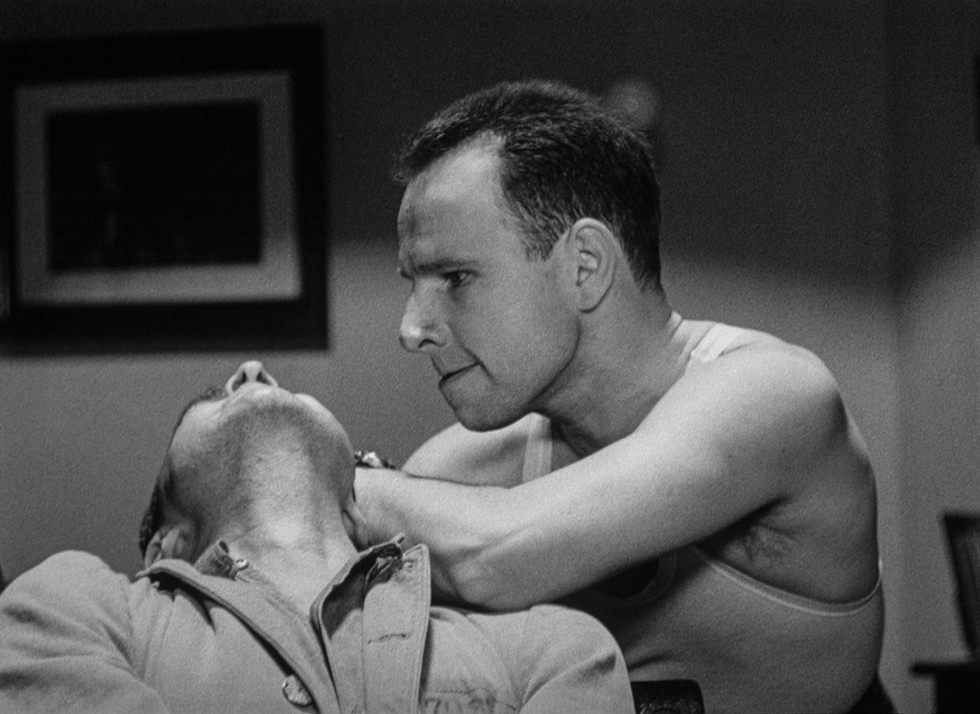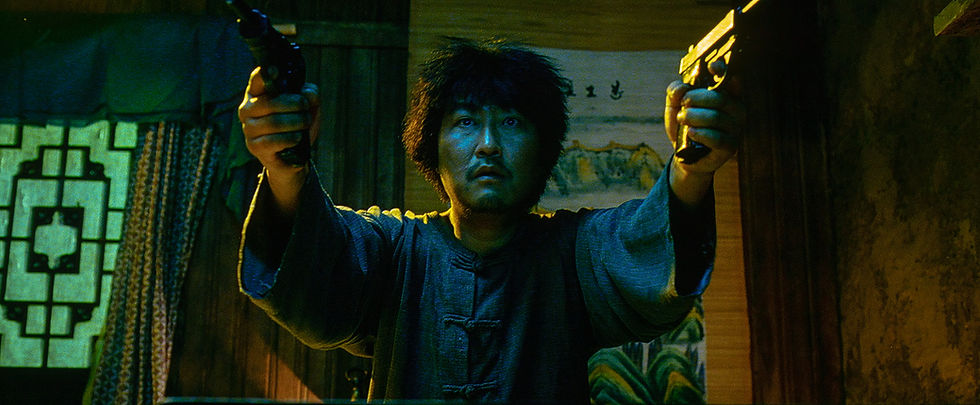Criterion’s exceptionally remastered “Brute Force” has lost none of its punch
- Craig Shapiro

- Dec 6, 2020
- 4 min read
Updated: Jun 24, 2022
BLU-RAY REVIEW / FRAME SHOTS

Already a leading man in his second role, the great Burt Lancaster stars as Joe Collins, who plots an escape with cellmates Howard Duff, left, Jeff Corey and John Hoyt.
(Click an image to scroll the larger versions)
“BRUTE FORCE: THE CRITERION COLLECTION”
Blu-ray, 1947, unrated, violence
Best extra: A 2007 interview with criminologist Paul Mason, editor of “Captured by the Media: Prison Discourse in Popular Culture”
MADE JUST after World War II and before the House Un-American Activities Committee ramped up its witch hunt, when Hollywood didn’t back down from socially-charged issues like racism, anti-semitism and vigilantism, “Brute Force” is a product of its times.
But as criminologist Paul Mason explains in a 2007 interview, it also transcends its times.
That’s because director Jules Dassin (“Rififi,” “Never on Sunday”) used the tropes of the prison-movie genre – they haven’t changed in 100 years and pretty much go with the territory, Mason says – to show the horrors of prison, and the failure of the criminal justice system, “in an honest way.”
Which is why Dassin’s hard-hitting drama lands like a punch to the solar plexus today: the system is still broken. The climactic riot’s unvarnished violence is shocking by 2020’s jaded standards. You can only imagine how audiences reacted 73 years ago.
(1) The Universal Pictures production premiered in New York City on June 30, 1947. (2) His cellmates watch as Collins returns after a stretch in solitary. (3) Hume Cronyn is unforgettable as the sadistic Captain Munsey. (4) The foreboding front gate of the medieval-like Westgate Penitentiary.
Dassin, an alumni of New York’s left-leaning Jewish theater, and screenwriter Richard Brooks (“In Cold Blood” “Blackboard Jungle”), who didn’t shy away from a heated topic, either, drive home their point by showing the inmates of Westgate Penitentiary as human beings, not numbers. Joe Collins (the great Burt Lancaster, already a leading man in his second role) and his cellmates (Howard Duff, Whit Bissell, Jeff Corey, John Hoyt, Jack Overman) aren’t psychos. They’re morally righteous men, and the mitigating circumstances that led to their incarceration make them seem ordinary.
The violence is the stock in trade of the power-mad Captain Munsey (an unforgettable Hume Cronyn, “Cocoon”), who uses mind games and a rubber club to get information. You can’t help but shiver as he draws the shades and hisses “wrong answer.” When he puts Collins and the others to work in “the drainpipe,” a cavernous excavation project that exists only to punish them, the riot is inevitable.
The supporting cast includes Charles Bickford (“The Song of Bernadette”) as Gallagher, editor of the prison news sheet, Art Smith (“In a Lonely Place”) as the drunken, humanistic Dr. Walters, Roman Bohnen (“The Best Years of Our Lives”) as the spineless Warden Barnes and Yvonne De Carlo (“Criss Cross”) as Gina, the woman “Soldier” (Duff) left behind in Italy.
(1) The inmates learn that their “privileges” have been revoked. (2) Charles Bickford is Gallagher, the editor of the prison news sheet. He sides with Collins after being told that his release has been indefinitely postponed. (3) Richard Gaines, left, is McCallum, the prison official who calls for tougher discipline, and Roman Bohnen is the spineless Warden Barnes. (4) An informant pays for talking to Munsey.
VIDEO/AUDIO
Berlin’s TLEFilms Film Restoration & Preservation Services, which remastered Dassin’s “The Naked City,” also recently released by The Criterion Collection, again works wonders. Like “Naked City,” “Brute Force” suffered over the years as ownership changed hands. Likewise, the Berlin magicians used footage from four separate elements, primarily a 35 mm nitrate fine-grant master positive from the British Film Institute and a safety duplicate negative, to create the new 4K master.
While the results aren’t always in the same league with that groundbreaking police procedural, they’re close. The detail fades a bit in some scenes, but the broad grayscale and razor-sharp contrast get an A+. You can get lost in the depth. Cinematographer William Daniels, an Oscar-winner for “Naked City,” would approve – check out the footage in the Mason interview and compare for yourself.
The soundtrack, mastered from the 35 mm composite fine-grain optical track, doesn’t have the same depth. Exhibit A: The score by Miklos Rozsa (“Spellbound,” “Ben-Hur”), who also worked on “The Naked City,” tends to get crowded in the center speaker. That’s no surprise given this film’s vintage; it’s also not a problem. Dialogue is plenty clear.
(1&2) Contemplating his next move, Collins gets vital information about the escape from a dying inmate. (3) The prisoners are kept under a tight watch by the guards. (4) Collins and Gallagher go over the details of the escape.
EXTRAS
Mason’s wide-ranging interview tops the list. He not only traces the evolution of the prison film – the 70 or so made in the 1930s were an allegory for the Great Depression – he takes the media to task. Too often, the films support the system, reinforcing the belief that prisons serve an important purpose as a means of punishment while any alternatives are never discussed. Until they are, he says, true rehabilitation will be a pipe dream.
The other extras have also been recycled: a 2007 commentary with film-noir specialists Alain Silver and James Ursini, a 2017 feature with film scholar David Bordwell about “Brute Force’s” array of acting styles, plus a stills gallery and trailer.
The accompanying booklet is good reading from start to finish, even if author Michael Atkinson gets long-winded in his essay about the film’s parallels to Nazi prison camps. There’s no arguing with his conclusion that for Dassin, “Brute Force” was more than a discussion about the failure of modern socioeconomic structures, “it was a manning of the ramparts.”
Also included are a 1947 profile of producer Mark Hellinger that ran in the Saturday Evening Post two days before the film’s premiere and a heated exchange of telegrams between Hellinger and Joseph Breen, head of the Motion Picture Association of America Production Code Office, about censorship. Universal Pictures exec William Gordon stepped in to calm the waters and some concessions were apparently made.
Not that you can tell. It’s hard to imagine a movie being more appropriately named.
– Craig Shapiro
(1&2) Flashbacks, a standard film noir narrative device, show the lives of “Soldier” and Collins before they went to prison. (3) Munsey tries to get information about the escape from Louie (Sam Levene), a reporter for the news sheet. (4) The power-mad Munsey takes over as the new warden. (5-9) The unvarnished violence depicted in the concluding riot is shocking even by today’s jaded standards.














































Comments